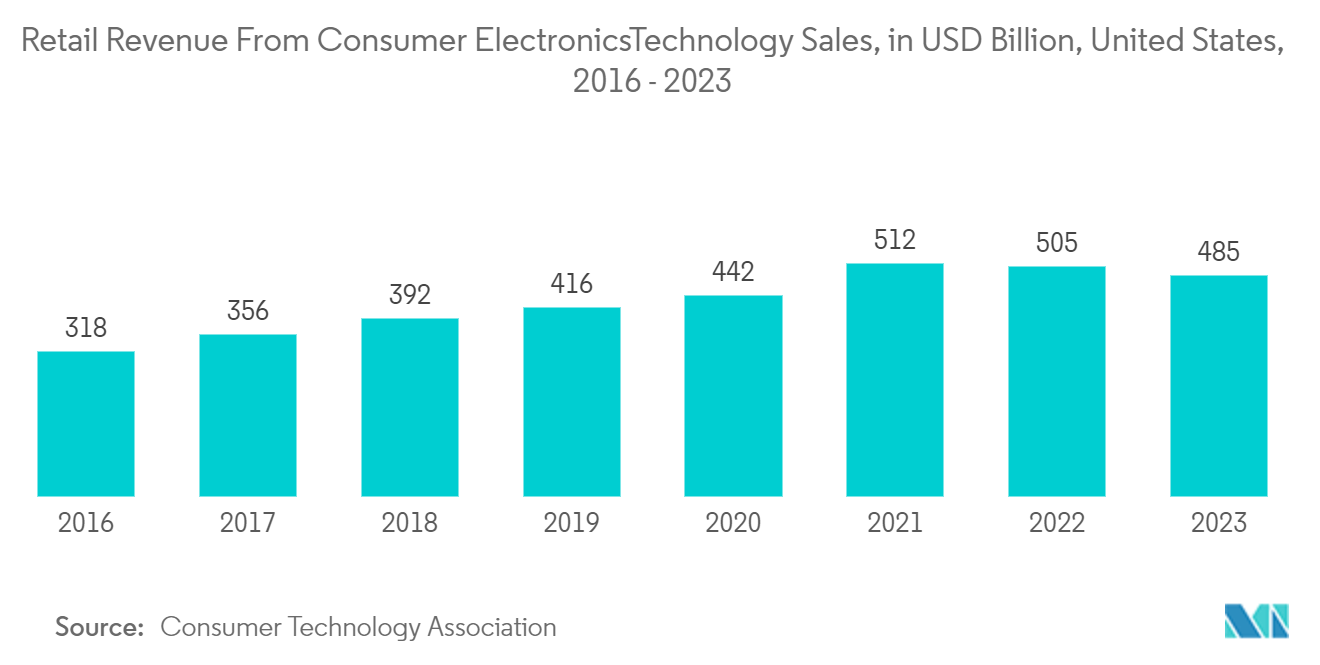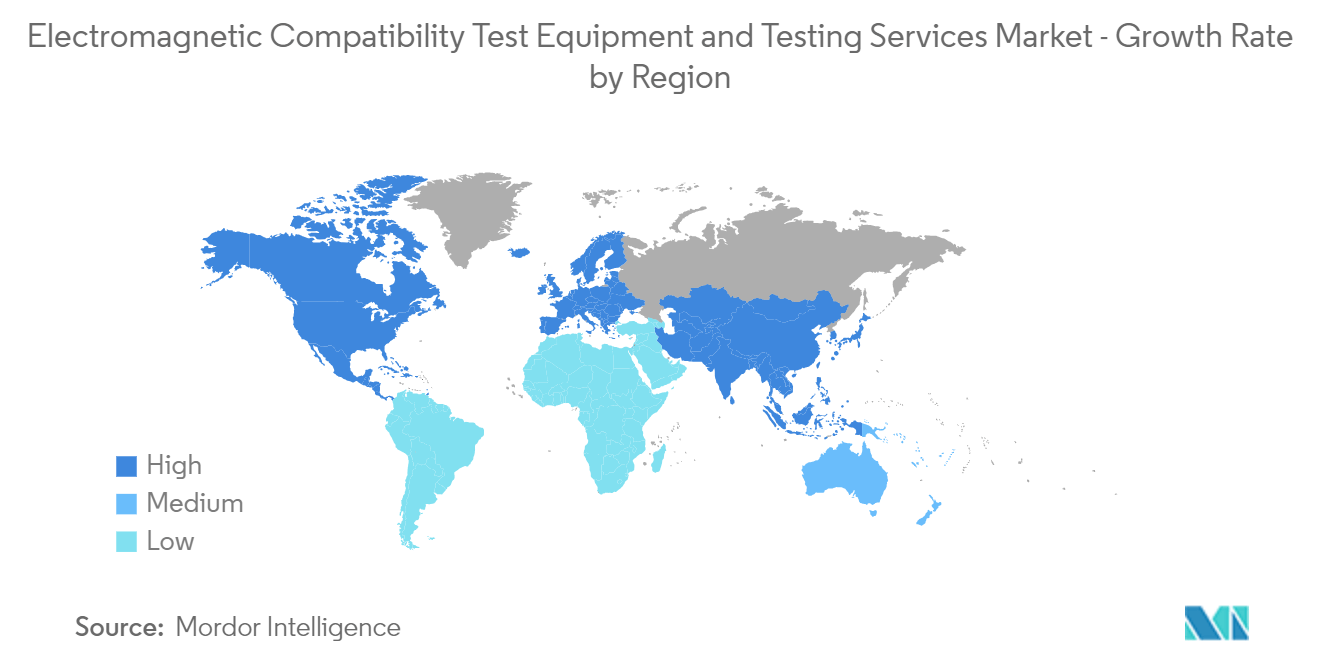Market Trends of Electromagnetic Compatibility Test Equipment And Testing Services Industry
The Consumer Electronics Segment is Expected to Drive the Market's Growth
- The density of electronics-based products is increasing in most verticals due to trends such as digitization, smart homes, and connected devices for the Internet of Things (IoT). To ensure the quality of the product from an electromagnetic compatibility (EMC) standpoint, regulatory bodies have enforced constantly evolving rules and directions on designing and manufacturing.
- Moreover, according to Cisco's Annual Internet Report, by 2023, there will be close to 30 billion network-connected devices and connections, up from 18.4 billion in 2018. Additionally, by 2023, IoT devices will make up 50% (14.7 billion) of all networked devices, up from 33% (6.1 billion) in 2018. Further, according to Ericsson, 5G subscriptions are expected to skyrocket globally between 2019 and 2027, rising from over 12 million to over 4 billion. Combined, these factors are anticipated to expand the consumer electronics industry's size significantly.
- Manufacturers must comply with the latest EMC directives and regional and industry-level regulations and standards through certification before market entry. For instance, to pree of EMC problems, the UK government has adopted stringent laws, forcing all importers and manufacturers of electronic goods to ensure that their products are electromagnetically compatible. Such initiations are anticipated to drive the need for EMC test equipment and services in the consumer electronics segment. Hence, such industry regulations are anticipated to drive the growth of the studied market.
- China is a prominent consumer electronics producer, especially in the brown goods product category. It features an extensive electronics manufacturing ecosystem and supply chain. For instance, according to the National Bureau of Statistics of China, in May 2022, around 37 million computers were produced in China, an increase from 32.66 million computers in April 2022. The region's robust consumer electronics manufacturing capabilities offer lucrative opportunities for the growth of the studied market.
- Similarly, according to the Consumer Technology Association (CTA), the retail sales revenue of consumer electronic/technology products in the United States is anticipated to be valued at USD 485 billion in 2023. Although this is a decline compared to the figures of 2022, stable growth is still anticipated during the forecast period, which in turn will drive the demand for EMC testing of consumer electronic products during the forecast period as several countries, especially developed ones such as the United States have stringent laws pertaining to product quality.

North America is Expected to Hold a Major Market Share
- North America is a prominent region for the EMC testing market players due to favorable economic and social conditions for developing and adopting modern technologies, including supportive government policies, higher consumer awareness, and developed infrastructure for research and development. The region's consumer electronics industry thrives due to the widespread use of smartphones, tablets, personal computers, HVAC systems, washing machines, and television sets.
- The United States is one of the significant markets for Electromagnetic Compatibility Test Equipment and Testing Services owing to the presence of strong automotive, aerospace, consumer electronics, and healthcare industries. As the adoption of electronic components/devices has increased across all the major end-user sectors in recent years, the demand for EMC test equipment/services is anticipated to grow further during the forecast period.
- Furthermore, the country has stringent regulations pertaining to electromagnetic radiation. For instance, in the United States, the Federal Communications Commission (FCC) regulates all commercial sources of electromagnetic radiation. The Title 47, Part 15 regulation of FCC specifies limits on the radiation from various radiation sources, which include virtually every product that employs a microprocessor, including office equipment, computers and computer peripherals, electronic games, and point-of-sale terminals.
- The North American region has the presence of several electromagnetic compatibility test equipment and testing services providers, which also facilitates the studied market's growth in the region. For instance, Washington Laboratories Ltd's test sites in the United States are listed by the FCC's Equipment Authorizations Branch in Columbia, Maryland, and conform to ANSI C63.4-2003.
- Furthermore, the North American automotive industry is progressing steadily toward autonomous vehicles. As these vehicles are loaded with multiple electronic units, the role of electromagnetic compatibility testing becomes even more important to ensure the error-free working of the automobile. Hence, all such trends together are anticipated to supplement the studied market's growth in North America during the forecast period.


